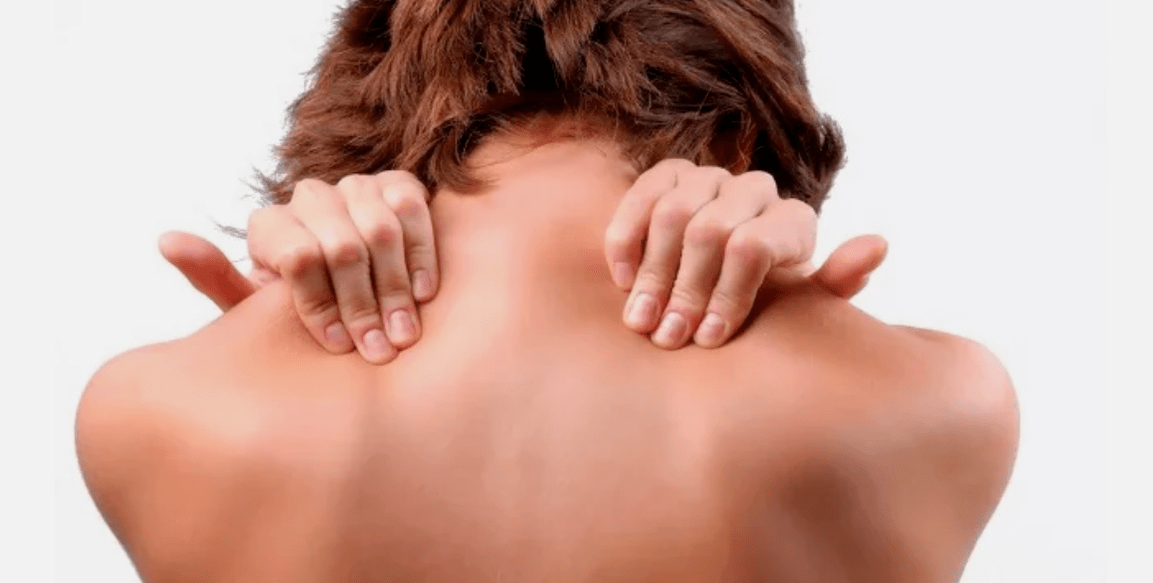
Cervical osteochondrosis is a disease in which the pulp between the vertebrae, acting as a shock absorber, is converted into an ossified tissue.
Neck pain?Dizziness?Crunch?Shemki on the cervix?"Is it really osteochondrosis ..." - do you think, you get a request online.Without panic!Osteochondrosis of the cervical spine is not a sentence, it can be prevented, delayed and even healed.How?Let's understand it.
Introduction
Unfortunately, cervical osteochondrosis is a quiet and insidious disease.You may not suspect its existence until at one point you feel muscle spasm and neck pain.Dizziness and numbness of the limbs are often added.
The reason for such seemingly unrelated phenomena in the complex nature of osteochondrosis.
What is osteochondrosis: From the general ...
Osteochondrosis is a disease of the spine in which the intervertebral discs are damaged, acting as shock absorbers.Squeezing and unbuttoning, they give the elasticity and elasticity of the spine, while allowing the body to maintain balance in the movement process.With their partial or complete destruction, this balance is lost, which inevitably affects a person's motor activity.The reason for such changes is often the physical wear and deformation of the disc or, more simply, its "aging".At the same time, the rest of our body can serve us faithfully for many years.
It is generally accepted that osteochondrosis is an age -related disease.However, in recent years, the disease has been noticeable "younger": there are 25 years in the risk zone and even more than a young man.The guilt of everything is a sedentary lifestyle, malnutrition and uneven physical activity in the body.In addition, statistics show that women are more ill than osteochondrosis.First, this is due to anatomical characteristics and emotional origin.However, the disease is more difficult in men.
... to the private - cervical osteochondrosis
Osteochondrosis of the cervical spine is the most common.It is a fact that it is in the neck that the bigger part of the vessels and nerve endings are concentrated, while the vertebrae themselves are much smaller (approximately half compared to the lumbar department) and the muscular corset is tangibly lighter.
Along with the high mobility and the proximity of the spinal cord, the neck of our body needs caution.
Why is cervical osteochondrosis dangerous?
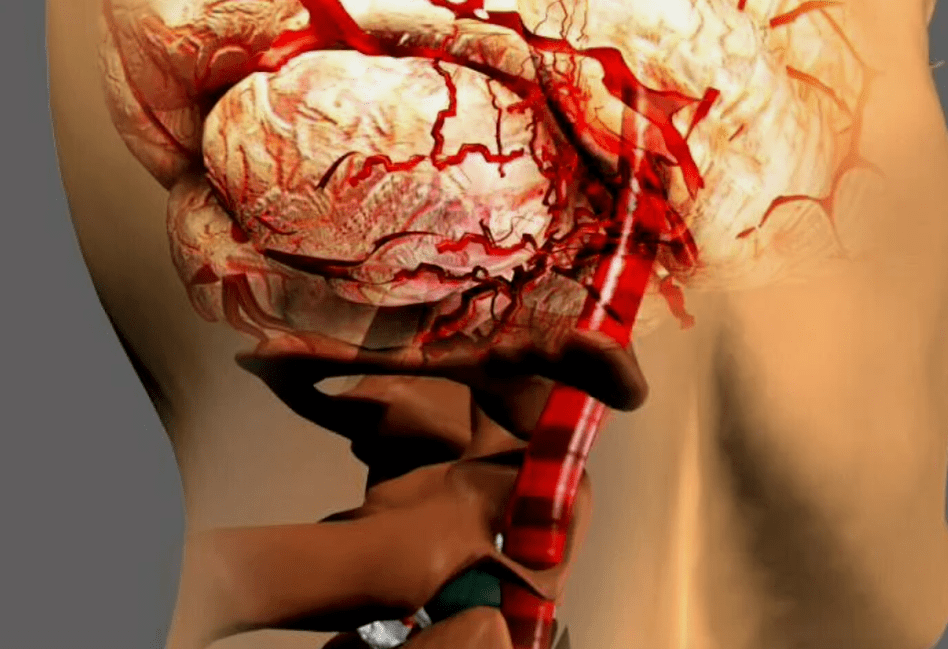
Alas, the danger of cervical osteochondrosis is justified anatomically - the spinal arteries pass through the cervical area, which saturates important brain centers in the back of the brain.And any malfunctions and disorders of the blood supply can be irreversible inherently, ranging from the pathological curvature of the spine (lordosis of the neck) to complete loss of motor power, course and even death.
Fortunately, it is almost impossible not to notice the symptoms of an upcoming disaster: problems with coordination, severe impairment of vision and hearing, often dizziness and loss of consciousness ...
If, combined with plain pain in the cervix, you noticed these signs to yourself, consult a doctor immediately!
Diagnosis and symptoms of osteochondrosis of the cervical spine
Osteochondrosis is a serious illness and only a qualified specialist, that is, a vertebologist who specializes in solving problems with the spine, orthopedist or neurologist, can diagnose it.
The most accurate ways to diagnose cervical osteochondrosis: X-ray, computed tomography (CT) and magnetic nuclear resonance (MRI), which allow not only the symptoms of cervical osteochondrosis, but also other concomitant changes in the body.
When a number of the following symptoms appear, seek the professional advice of the doctor immediately.
- Dumb, sick, intense neck and nape pain
- cervicals, crunching when your head is turning
- Dizziness, "veil" in front of my eyes, fainted
- headache
- Nausea, vomiting
- Limb numbness
- tinnitus, visual damage
- General muscle weakness
The pain for osteochondrosis is often ill, given to the head and is accompanied by numbness of the arms and legs.This is caused, first of all, by pinching the nerve endings and an increase in intracranial pressure.
The nature of osteochondrosis
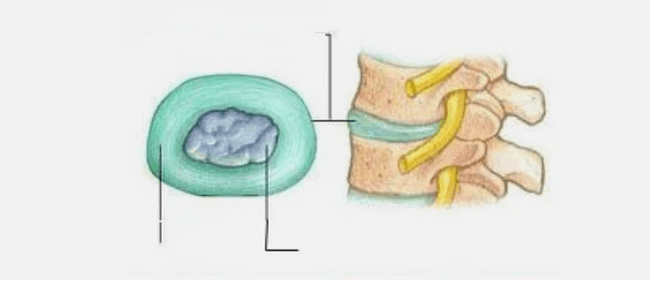
Like any disease, osteochondrosis of the spine has several stages of development.
For a better understanding of the processes that take place in the body, we first suggest that we first understand the structure of the disc itself and then analyze what changes are characteristic of each stage of osteochondrosis.
The vertebral disc itself consists of several parts: Pulpo -Bunkven Yako Nucleus (inside), fibrous ring (outer shell) and hyaline cartilage, separating the disk from the vertebrae and performs the function of power.
The pulpitic nucleus is rich in water, and this is responsible for depreciation, adapting to the center of gravity, squeezing and moving like a mercury ball.The fibrous ring surrounding it, on the contrary, has a dense structure and consists of intertwined fibers.Since the main task of the fibrous ring is to protect the core from damage, it was precisely that the "impact" in itself in itself with large loads.
Stages of osteochondrosis
Traditionally, four stages of osteochondrosis are distinguished.
Cervical osteochondrosis of first degree - preclinical stage
This is the early stage of the disease when SO "drying" on the disk occurs: its height and elasticity are reduced.
At the same time, there are still no structural changes - as well as symptoms and, accordingly, complaints.You may not experience discomfort;The only "harbinger" can be morning stiffness and salt deposits in the neck.Although you see, with our lifestyle, these feelings are more normal.
Cervical osteochondrosis of 2nd degree - the beginning of structural changes
Here the irreversible changes begin in the pulpic nucleus - necrosis and destruction caused by a violation of metabolic processes - at the same time as the formation of cracks in a fibrous ring.
The body begins to send SOS signals in the form of acute neck pain, reduced endurance and rapid fatigue.
Cervical osteochondrosis of grade 3 - progressive discos
The tightness of the fibrous ring is disturbed, resulting in the nucleus of the pulp "protruding" in the spinal canal through the cracks.
If there is no complete rupture of the outer sheath, the intervertebral disc can still be restored.This process is called the bulge of the spine and is successfully treated on an outpatient basis.At the same time, you experience constant neck pain and everyone back, progressing during loads and remaining in an awkward position.
In the case of complete destruction of the fibrous ring, problems with coordination, dizziness and nausea are added to the pain;There is a risk of damage.You need to seek medical attention quickly!
Cervical osteochondrosis of grade 4 - regeneration
As a result of irreversible processes between the vertebrae, outgrowths (osteophytes) are formed, which block the mobility of the joints.The pulpulated nucleus is replaced with a scar tissue, the nerve endings are injured, only surgically possible.
Paradoxically, in terms of well -being, you can feel noticeable improvements - the spine again acquires the ability to take loads.However, pain and limited motor activity will subsequently be exacerbated only.
The causes of osteochondrosis

Alas, talking about the causes of such a difficult disease as osteochondrosis, you should keep in mind many factors: from external conditions to physiological predisposition.
How to find out that you are at risk?Mental tick against each of the points that are right for you and your lifestyle.
- Have you had spinal injuries?
- Is there any excess weight (degree of obesity)?
- Study of bad habits (smoking, alcohol use), regular stress?
- Do you suffer from chronic infectious diseases, metabolic disorders?
- Is your work related to hard physical labor?
- Have you diagnosed with stand and/or flat feet?
- Do you experience regular spine loads?
If at least one of the questions you have answered affirmatively, alas, you are at risk.This is bad news.But there is also good: osteochondrosis of the cervical spine can be stopped, cured and even prevented with timely diagnosis and the onset of proper prevention.
How to prevent osteochondrosis
There are a number of preventative measures that we recommend to watch the game "in front of the lead" with osteochondrosis of the cervical spine.
Step 1. Get up!
Do you lead a sedentary lifestyle?Study work, many hours of stay in the computer, improper and malnutrition, lack of sleep, stress ... are they known?
All this contributes to the "stagnant" processes in the body and provokes the initial stage of osteochondrosis.
To avoid the progression of the disease, reasonably approach your daily routine, take regular breaks (every hour for five minutes) and take more care of your health more.Believe me, very soon you will say "thank you" yourself!
Take the rule: put reminders (or in particularly "neglected" cases - an alarm clock) so that you do not miss the moment at the work of the excitement ... When you just have to get up and go.
Step 2. Take care of your own convenience!
By convenience, we mean the physical signals that the body gives.Listen and take care of yourself!
First, avoid excessive and unreasonable loads.If you are regular from the gym, the dose of weight, do not miss the heat and follow the regularity of your workouts.
Second, give up uncomfortable shoes.We do not urge mercilessly to get rid of our favorite shoes or exit boots - let them stay for special occasions.It is important that these "special cases" do not become your norm of life in 24/7 mode.For every day, choose shoes with a comfortable block that does not cause discomfort and does not affect the stand and gait.
Third, do not save furniture and sleeping accessories.If the office chair is definitely not suitable for you, agree to replace or take care of your own comfort.Subsequently, this investment can save you from serious regular costs at one time.
Use only anatomically correct furniture that reduces the load of the spine.For a house, choose a bed with a hard mattress and a comfortable pillow, suitable in density and height.Anatomical or ordinary - you decide because it depends a lot on the characteristics of your body.
Step 3. Don't forget about prevention!
Alert - means armed, right?
If you experience periodic fatigue and neck and back pain or, conversely, you want to avoid them, we recommend a simple set of exercises, especially effective in the initial (preclinical) stage of osteochondrosis.
Cervical osteochondrosis gymnastics
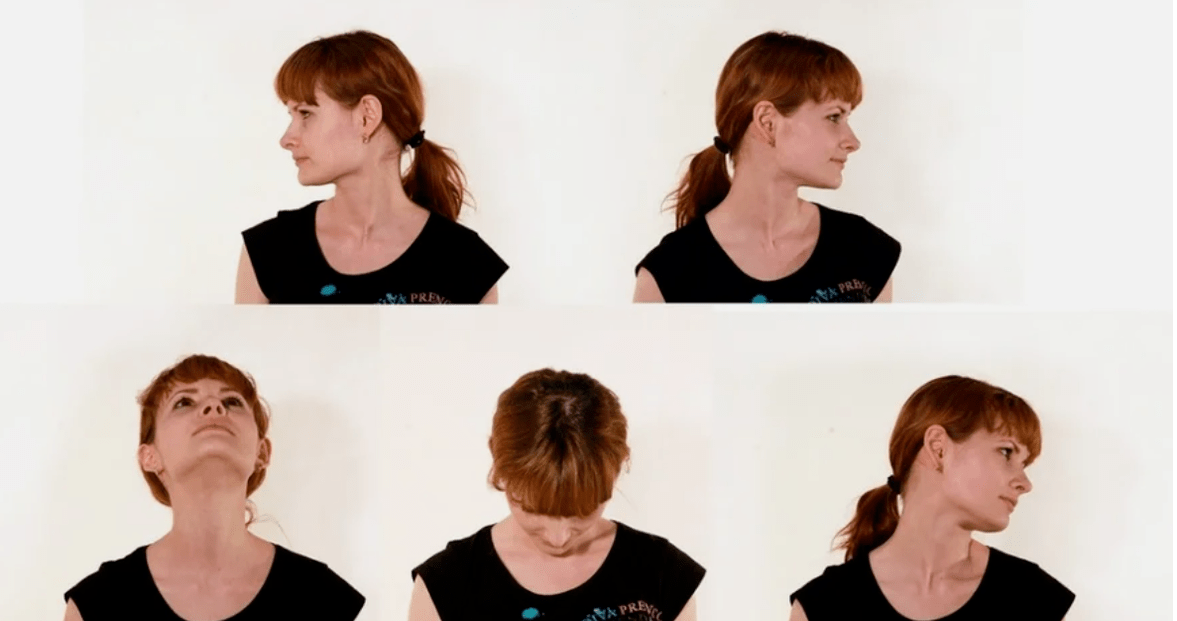
You can perform gymnastics for osteochondrosis of the cervical spine, both at home and directly in the workplace.
- Sit evenly, straighten your back, relax your hands and lower it on your body.Rotate your head consecutively to the right and left, about 90 degrees (or how many joints allow).Move smoothly, avoid sudden movements.
Do 8 reps for the first time and in the future gradually increase the number of turns to 15 in each direction. - In the same position, tilt your head forward, pressing your chin to your chest and back, taking the back of the head at the back of the neck.Start with 8 reps and increase to 15 times.
- Then go to your shoulders.First, lift both shoulders up (in the ears), hold for a few seconds and lower it back.So 8 reps.
Then move the shoulder alternation: right up, left down, Shift - 8 reps. - Place your palm on the forehead and press the head forward at the same time.Pause for 10 seconds - and so 8 times in a row.
After the end of the complex, be sure to massage your neck to relieve tension.
Warning!If you experience severe discomfort during exercise, consult a specialist and carefully dose the load!
Cervical osteochondrosis: Treatment
Treatment of osteochondrosis of the cervical spine can be closely focused or complicated, combining several components at a time.
Physiotherapy
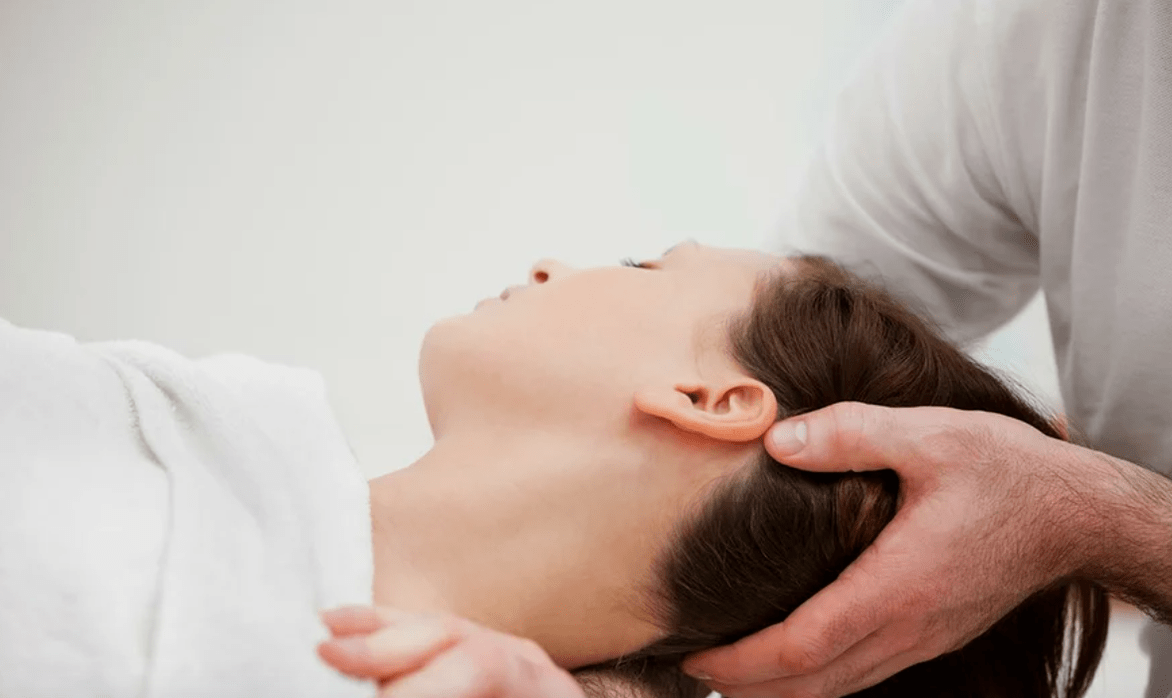
Cervical osteochondrosis is a method of local effects directly on the focus of inflammation.The therapeutic effect is achieved due to the improvement of blood circulation and metabolic processes.Neck pain stops, the severity of the symptoms decreases.
There are many options for physiotherapy for cervical osteochondrosis: electrotherapy, magnet exposure, laser, water and mud treatments, electrophoresis, acupuncture, as well as moderate heating of the inflamed area.
Before registering for procedures, carefully examine the contraindications and consult your doctor.
Massage
With cervical osteochondrosis, the massage of the collar area helps well.You can register for sessions to massage or massage using professional vibration massagers.
Medicines and diet
Among the most commonly used in osteochondrosis of drugs are anti -inflammatory drugs, painkillers, antispasmodics, antioxidants, as well as drugs aimed at improving blood circulation and metabolic processes.The spectrum of drugs includes tablets, creams, ointments and intramuscular injection solutions.
Remember that only a doctor can competently choose a medical medicine!
A balanced diet will help increase the effectiveness of medicines and improve the overall tone of the body.Limit the consumption of fatty, spicy, smoked foods, salt.Prefer vegetables and fruits, properly cooked meat, fish and dairy products.Add nuts and honey to the diet.And drink more liquids.
Even if osteochondrosis does not threaten you, a balanced diet will positively affect the general well -being and condition of the body.You will see, in a few weeks you will notice incredible changes!Check your own experience!






















